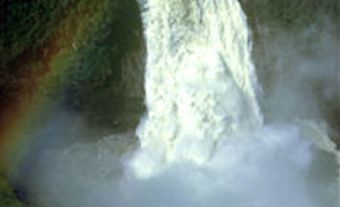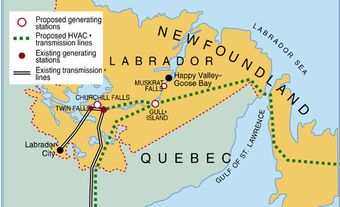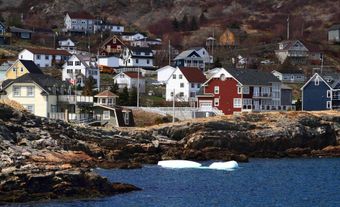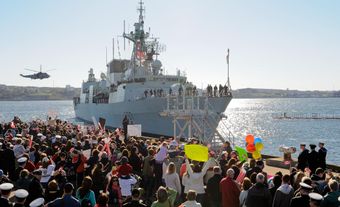Happy Valley-Goose Bay, Newfoundland and Labrador, incorporated as a town in 1973, population 8,109 (2016 census), 7,552 (2011 census). The town of Happy Valley-Goose Bay is the result of the amalgamation of two towns situated at the western end of Hamilton Inlet, Labrador. The community began with the construction of an air base during the Second World War. It remains home to a Canadian Forces Base and a small civilian population.
Settlement
Happy Valley-Goose Bay is located on the traditional territory of the Innu and the NunatuKavut (southern Inuit).
In 1941, Canada and the United States decided to build a military air base at Goose Bay. Labrador represented an important strategic location for the Allies during the Second World War. On the one hand, it was an ideal stopover point for planes en route to Britain from the United States. On the other hand, a military presence in Labrador would increase the Allies’ defenses in the North Atlantic region.
The need for workers to build the base drew civilians from other parts of Labrador. At first, they camped at a site called Otter Creek. When authorities decided that Otter Creek was too close to fuel storage for the air base, the workers moved to a nearby location that would become the townsite of Happy Valley.
As the pace of construction increased, Happy Valley grew with 3,000 employed on the project. By 1943, the airport was the largest in the Western Hemisphere. It was used by the Royal Canadian Air Force, the United States Air Force (USAF) and the Canadian Army. The base was large enough to house 5,000 military personnel.
Development
The town of Happy Valley continued as a small civilian community servicing the base, which remained a permanent airport after the war. It played a defensive role for North America during the Cold War. From 1957 until the early 1970s, the USAF operated the base under lease from the Canadian government. In 1973, Happy Valley amalgamated with Goose Bay.
Today, the Canadian Armed Forces and NORAD use the base, 5 Wing Goose Bay, for operations and training exercises. (See also Canadian Forces Bases.)
Population
Indigenous people who identify as Inuit, métis or, in a minority of cases, First Nations, represent nearly half the population of Happy Valley-Goose Bay. Most of the rest of the population reports European origins. English is the mother tongue of 93 per cent of residents.

 Share on Facebook
Share on Facebook Share on X
Share on X Share by Email
Share by Email Share on Google Classroom
Share on Google Classroom




